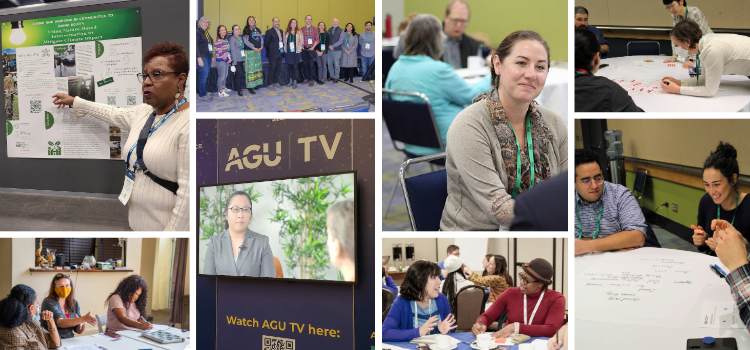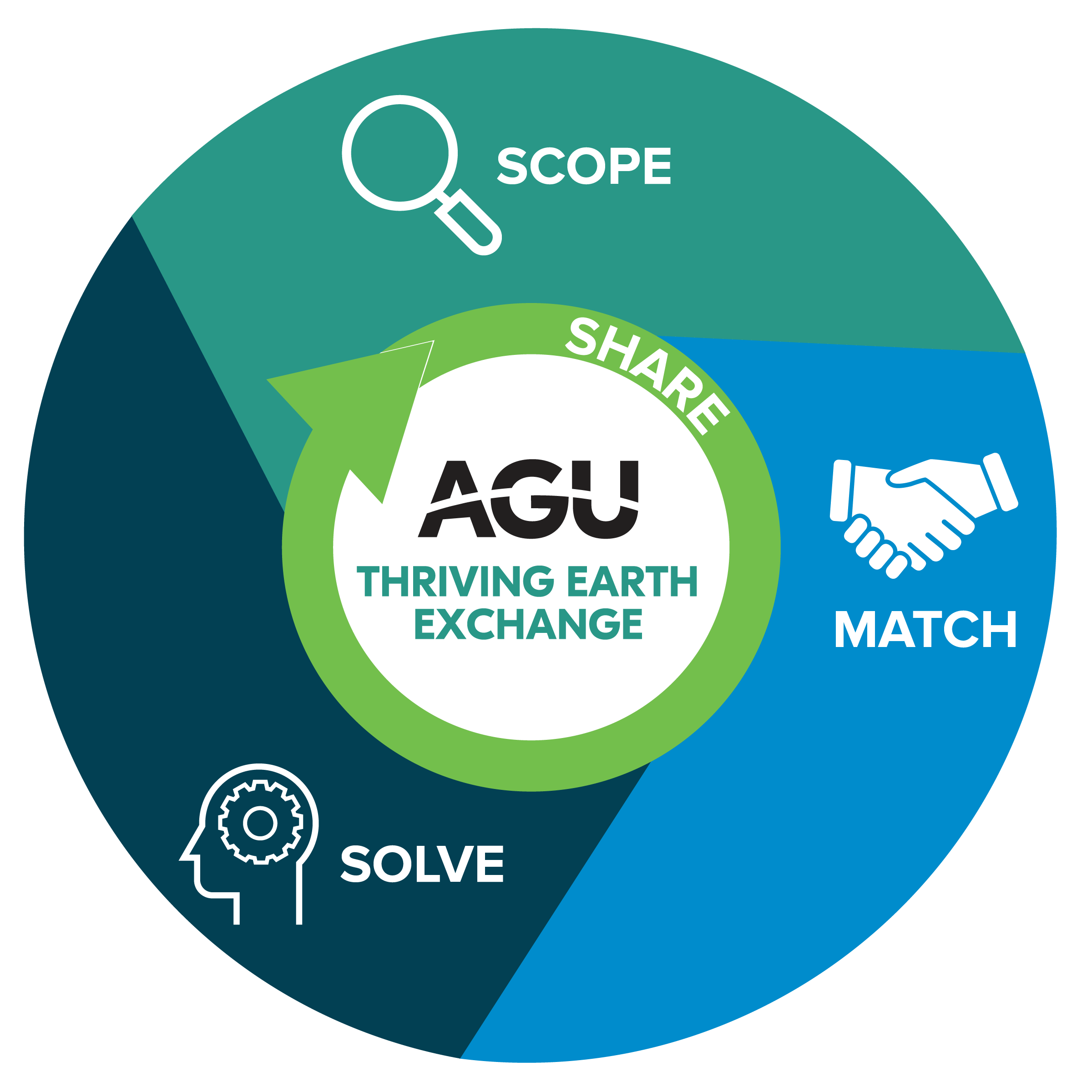
Community Science Fellows with Thriving Earth Exchange
Thriving Earth Exchange Community Science Fellows are current and future leaders in the community science movement. Community Science is the process by which communities and scientists do science together to advance one or more community priorities. “Doing science” includes defining questions, designing protocols, collecting and analyzing data, and using scientific knowledge in decision-making and planning.
Community Science Fellows are committed volunteers who are eager to facilitate and lead collaborative, co-developed community science projects that produce on-the-ground impact in local communities. They can have any background, experience level, or location. Fellows have a strong focus on community priorities; the ability to listen, empathize, remain flexible, communicate; and have a respect for all knowledge and ways of knowing. The skills Community Science Fellows hone prepare them to manage diverse teams, work across disciplinary boundaries, and connect science to action.
Each Fellow is matched with a local community and is responsible for guiding a community science project from idea to impact. This includes getting to know the community, identifying ways science can advance community goals, finding and recruiting partner scientists to assemble a project team, managing and supporting the project, and helping share the team’s story and project impact. This fellowship is unpaid, but Fellows are trained and receive ongoing support from AGU Thriving Earth Exchange staff, our partners, and a peer group of Fellows.
Meet our latest cohort here!
Thriving Earth Exchange Projects
 Typical projects take from 12-18 months from start to finish. Fellows are expected to commit to at least 3-4 hours per week in the first months. Most of that time will be spent conversing with the community to understand their priorities, designing a project that leverages Earth and space science to meet those priorities, finding and interviewing scientists to work on that project, and connecting the scientist(s) and community lead(s) to form a project team. After that, the time commitment will decrease to 3-4 hours per month to schedule and facilitate team meetings, check in with team members, and troubleshoot issues as they arise.
Typical projects take from 12-18 months from start to finish. Fellows are expected to commit to at least 3-4 hours per week in the first months. Most of that time will be spent conversing with the community to understand their priorities, designing a project that leverages Earth and space science to meet those priorities, finding and interviewing scientists to work on that project, and connecting the scientist(s) and community lead(s) to form a project team. After that, the time commitment will decrease to 3-4 hours per month to schedule and facilitate team meetings, check in with team members, and troubleshoot issues as they arise.
Examples of past projects include Assessing Flood Risks for Community-Led Action in Gulfport, Mississippi, Updating a Climate Vulnerability Assessment in Santa Cruz, California, and Mapping Heat Vulnerability and Community Health in the Bronx, New York, among many others!
Requirements/Qualifications
To be successful, a Fellow must have a general knowledge of Earth science, be organized and proactive, value community science, and be committed to engaging with their community and scientific partners for the duration of the project. This means Community Science Fellows come from a range of backgrounds but applicants should have completed an undergraduate degree or have a minimum of 3 years’ experience working in a science-related to informal STEM-learning field. We have communities that speak English as well some some that speak Spanish – we welcome bilingual Fellows.
Frequently Asked Questions
We accept and welcome Community Science Fellows with all different backgrounds – recent undergrads, grad students, scientists, retirees. Career level does not mean any level of success with a project. Fellows do not need to be scientists or on an education path to be one.
Typical Thriving Earth Exchange projects last 12-18 months. Occasionally, a community science project will take far longer than initially designed. In these cases, we discuss with the Fellow whether they are able to continue past the agreed up on 12-18 month scope. If so, the project will enter a second phase, which is considered a new project and will require rescoping to redefine an appropriate tract. If the Fellow chooses not to continue, the project will be matched with a new Fellow.
This is a volunteer role that Fellow engage in remotely. We currently work with communities in North America, the Caribbean, and South America and are English or Spanish-speaking. So, fellows should be prepared to work in the time zone that is most comfortable for the local community.
Fellowship cohorts are launched quarterly via a 2-day online orientation workshop supported by Thriving Earth Exchange and our partners. During this hands-on workshop, Fellows engage in skill-building and leadership exercises (e.g. active listening, project design, cultural humility, strategic communication, facilitation and more) and learn how to successfully launch and manage community science projects. Fellows are also asked to complete a self-paced online course. Following the required orientation, fellows are supported through staff mentorship, monthly cohort calls, access to the Thriving Earth Exchange Scientist Network database, peer-to-peer support through a Slack workspace, and a robust online resource hub.
Fellows do not need expertise in the specific area of science or applied skills needed for the Thriving Earth Exchange project. Fellows will work with Thriving Earth Exchange to find and recruit pro bono experts who will provide that knowledge. Fellows do not serve the role of scientist expert for the project.
Projects come to the program through Community Leads who apply through a similar yet separate process. We do not know which communities will apply at the time of Fellow selection and cannot guarantee there will be a certain community, topic, region, or issue. Because Fellows engage with communities and experts via digital resources such as virtual meetings and email, they do not need to be located in the same area.
The Fellowship is unpaid, but participants receive free training, hands-on experiences, and valuable connections.
Application
To become a Community Science Fellow, see the cohort launch schedule below and fill out the short application form that follows.
| Cohort Launch | Location | Deadline |
| September 18-19, 2024 | Online | August 8, 2024 |
Application form not loading? Click here to open in a new window.
